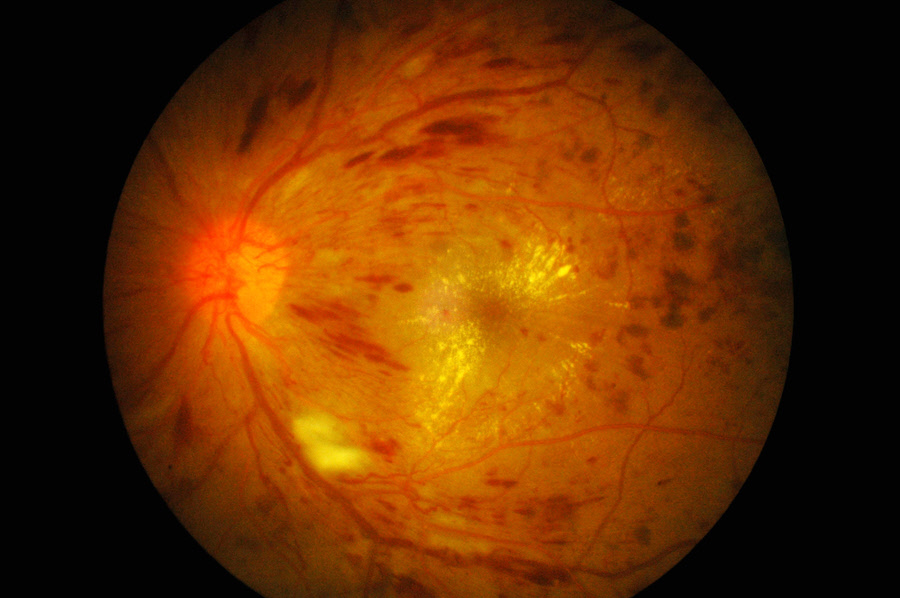Introduction
The macular is the area at the the center of the retina responsible for control of the full vision abilities. Macula edema is the buildup of fluid in the macula which causes the macula to swell and thicken. It can distort vision or cause blindness.
Diabetic macular edema is an eye disorder that affects people with diabetes. In diabetics, high blood sugar can lead to the damage of the tiny blood vessels of the retina, the back inner wall of the eye. It can also block them entirely. At times, tiny bulges protrude from the blood vessels causing blood and fluid to leak into the retina. This eye disorder is known as diabetic retinopathy.
An individual must first suffer from diabetic retinopathy to develop DME. Diabetic macular edema is a severe eye complication and a significant cause of loss of vision in people suffering from diabetes.
Also Known As
DME
Sub-Types
- Focal diabetic macular edema
It is brought about by abnormalities in the retinal blood vessels.
- Diffuse diabetic macular edema
It occurs because of the swelling of the retinal blood vessels.
Causes and Risk Factors
DME is caused by abnormal leakage and built up of fluid in the macula. The leakage occurs because of the damaged blood vessels in the retina.
Diabetic macular edema risk factors include:
- Having diabetes for an extended period; 20 years and above
- High blood pressure
- Poorly controlled blood sugar
- High levels of fats in the blood
- Low levels of protein in body fluids
- Fluid retention
- Smoking
- Pregnancy
- Physical inactiveness
Signs & Symptoms
The common symptoms of diabetic macular edema are:
- Blurry or hazy vision,
- Strings or spots (Floaters)
- Double vision
- Changes in seeing colors
Diagnosis
The eye care professional will use various diagnostic tools to detect diabetic macular edema including the slit lamp and stereoscopic fundus photographs. They allow the professional to determine if the retina is thickening and the state of the central macula.
Treatment
Treatment is aimed at maintaining vision and reducing future vision loss.
Medical Treatment
The treatments for diffuse diabetic macular edema and focal diabetic macular edema and differ. Treatment involves medication and laser surgery.
Medication may reverse or even stop the effects of eye inflammation and the growth of abnormal blood vessels. The eye doctor may prescribe Anti- VEGF to prevent fluid from leaking from the damaged retinal blood vessels.
Some patients including those who have had cataract surgery are given steroid injection instead of Anti- VEGF therapy.
Surgical Treatment
Surgery may apply where diabetic macular edema doesn’t involve the centre of the macula. The goal of laser surgery is to stop the leakage of fluid and blood in the macula.
The eye doctor uses a laser to close the leaking blood vessels and prevent more fluid from entering the macula.
Focal laser therapy is commonly used to treat focal diabetic macular edema and grid laser treatment to treat diffuse diabetic macular edema.
The doctor may also use vitrectomy to drain humors fluid from the inside of the eye and remove scar tissue on the retina.
The average recovery time following a DME surgery is three to six months. The swelling in and around the macula will subside as the eye heals.
The normal side effects include:
- Sensitivity to light
- Irritation in the eye
- Black spots
The side effects are likely to disappear with time.
It is important to note that laser surgery does not always provide improved vision to diabetic macular edema patients.
Prognosis/Long-term outlook
DME is a serious eye condition that must be treated by an eye doctor. It is a leading cause of loss of vision and blindness in people with diabetes. With proper diagnosis and treatment, it can be managed.
In the long term, patients should watch their blood pressure, blood sugar and cholesterol levels. They should also maintain a healthy lifestyle.
Prevention/Follow Up
At times, there is little one can do to prevent diabetic retinopathy or diabetic macular edema. If an individual has diabetes, they should get regular eye check-ups. It will help to identify any eye issues early.
The best way to avoid DME is by exercising regularly and eating a healthy diet rich in fruit and vegetables. One should avoid stress, processed and fatty food, smoking and excessive consumption of alcohol.


